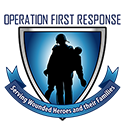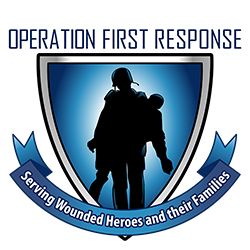By Lt. Cmdr. (Dr.) Paul Sargent, Division Officer and founding Program Director for Overcoming Adversity and Stress Injury Support (OASIS)
As the founding director of the Overcoming Adversity and Stress Injury Support (OASIS) program, I have been thinking a lot about individual resilience lately. Last week, OASIS celebrated one year of treating patients and I couldn’t be more proud of the work we have done so far and what we continue to do, but the concept of resiliency still remains at the forefront of my mind daily.
It is a commonly discussed term but not well defined, and many experts will disagree on exactly how to measure it. For me it is simply the ability to pick oneself up and keep going after taking a hit.
I take care of a lot of service members who define resilience as “strength” which is true, but it is also an elastic strength, not a rigid one. Sometimes in the military we are told that there is one right way to do things, but when people later find that the “one way” doesn’t work for all situations, they feel trapped and unable to develop a new approach and adapt to an unexpected problem. Coping with and recovering from post-traumatic stress disorder (PTSD) can be like that. People can get “stuck.”
Resilience is thought by many to be a “trait,” that is, it is something you are born with, sort of like curly hair, or eye color. Experts have spent many years pondering what makes one individual break under stress while another thrives. They do research into what makes a good Marine tick, or what kind of personality makes for a good aviator.
However, the presumption that resilience is somehow born into us, causes us to miss some important aspects of the virtue. Resilience, the ability to recover and bounce back, is not like eye color or curly hair. It changes over time and there are things we can do to increase or decrease it. Therefore, I find it more helpful to think about resilience as a “state” rather than a “trait.”
If you think back across your life it is easy to remember situations in which you triumphed or excelled in difficult situations and exceeded even your own expectations. It is also easy to remember times when you have been humbled by defeat or failure in circumstances that you didn’t think should be that challenging. This is an example how resilience changes over time, and at times we are more or less resilient than others. The goal is to increase the amount of time we spend in a high resiliency state instead of a low resiliency state.
The good news here is that increasing or decreasing resilience is not rocket science. It comes back to common sense things.
Resilience can be increased or decreased by your physical health, your mental health, your financial wellbeing, your social connections and peer group, the functioning of your family, your use of illegal or medicinal drugs, your standing within your chain of command, and your sense of purpose or spiritual practice. This is a short list and could be greatly expanded to cover all the things that support or prevent someone from bouncing back to their adverse circumstances.
The idea I want to convey is that you can take action to improve every one of these areas. You have the capacity to increase your resilience, and maybe even more importantly, the resilience of those around you.
In the military we rely on the wellbeing and readiness of those around us. In a difficult or challenging situation, is it possible to do well, while everyone else around us is doing poorly? Not likely. Pay attention to the resilience factors of those around you and when you see people doing things that undermine their resilience, let them know and help them find a better way. You’ll get the payback many times over when those around you are better able to bounce back under stress and then help you to do the same. We focus on these factors at OASIS. We want to continue to pay as much attention to supporting true “mental health” as we do to treating “mental illness.”
The OASIS program is available to active duty service members with OIF/ OEF related combat PTSD who have not improved with other treatments. We are staffed by military and civilian providers. Our goal is to treat the whole person and not just the illness. Our approach requires hard work, a desire to improve, and a desire to change the way we approach the resilience factors in our lives. In the end, we understand that the secret to the good care of the patient is in actually caring for that patient.
Lt. Cmdr. (Dr.) Paul Sargent, M.D., is a Psychiatrist and former U.S. Naval Flight Surgeon. He has served as the squadron medical officer for HMLA-267 and deployed to Iraq in 2009. Sargent is currently the Division Officer and founding Program Director for OASIS, the Navy’s first residential treatment program for combat related PTSD. OASIS is located at Naval Medical Center San Diego, Calif. (Point Loma site).





Recent Comments